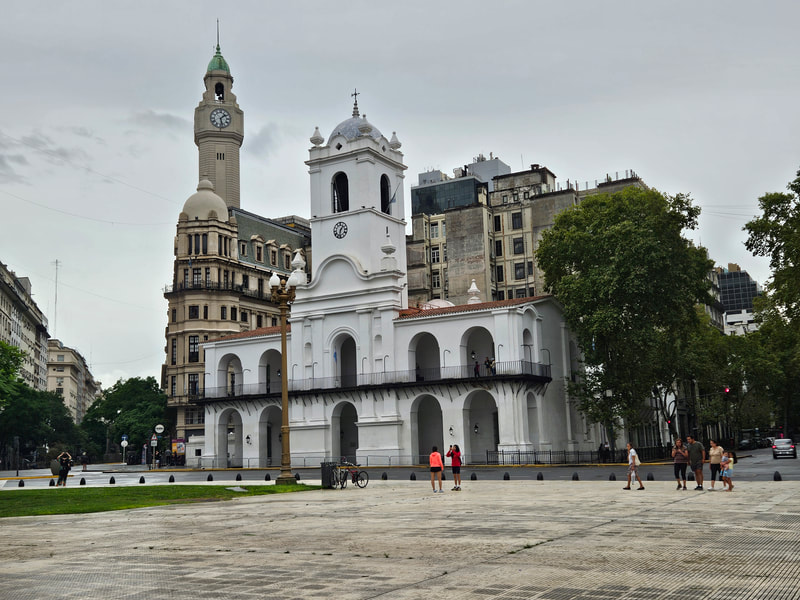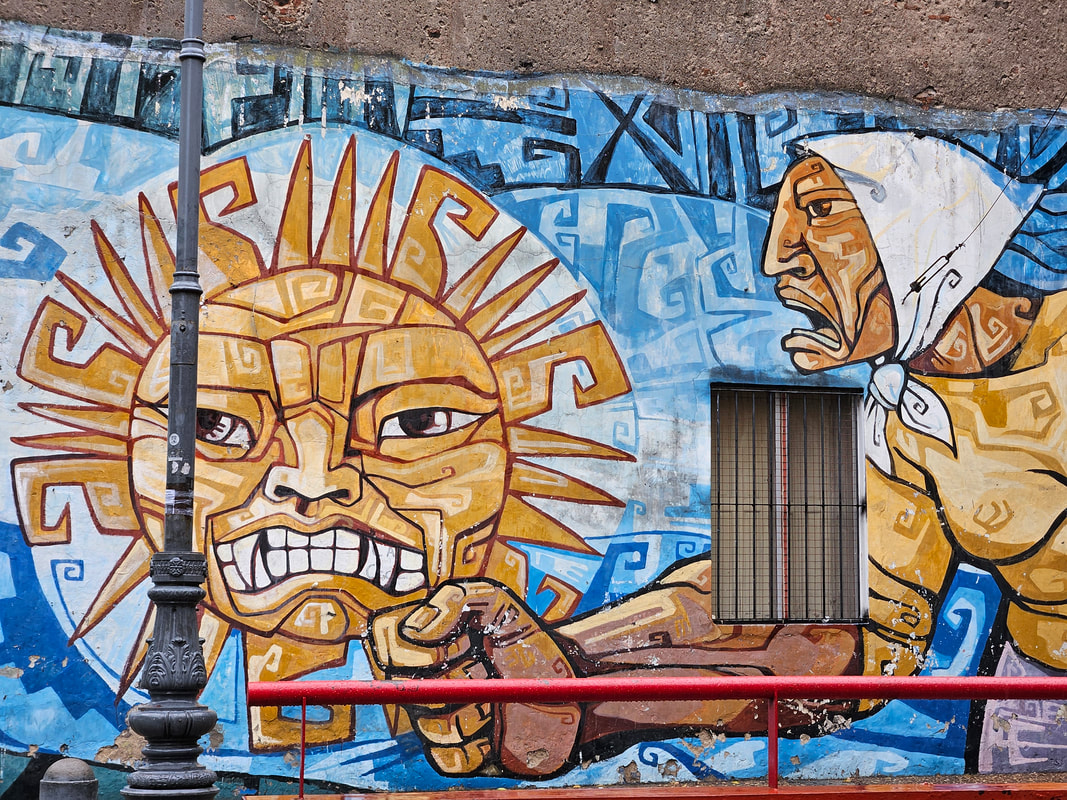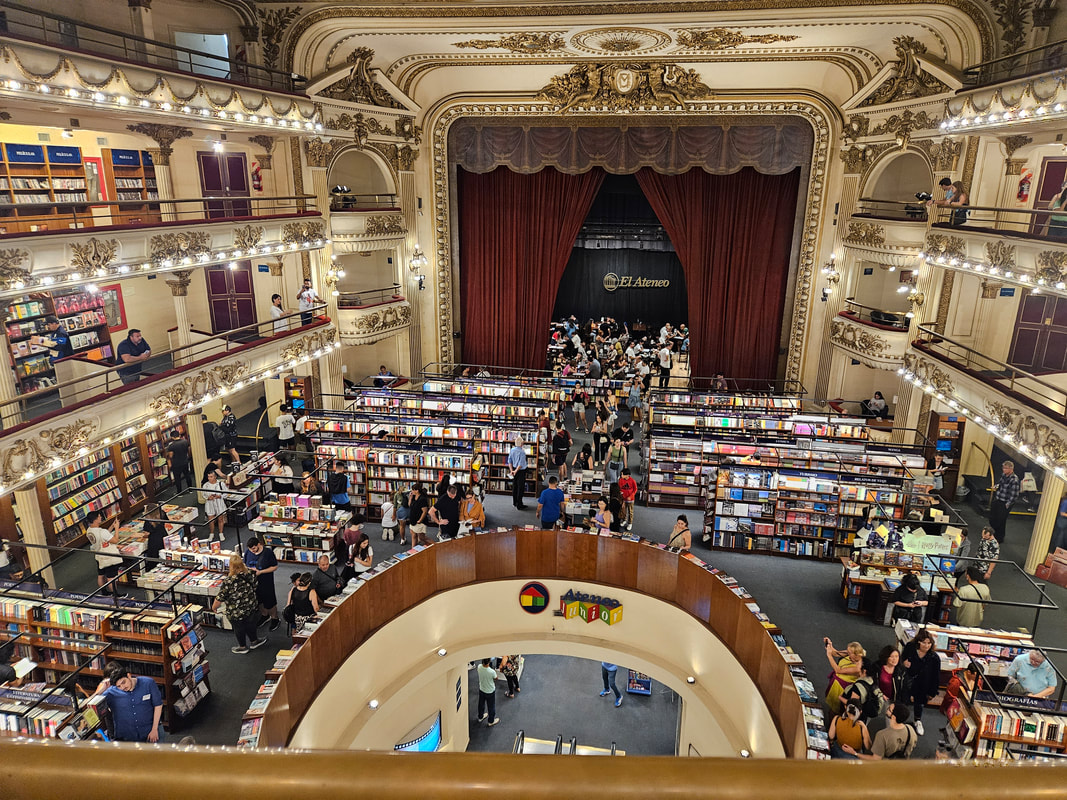|
How did the name Buenos Aires come about? It means “good air” and dates back to the 16th century shrine of Santa Maria del Buenos Aire that sat above the Sardinian capital Cagliari. The shrine was built on a hill above an area of swampland – away from the stench and malaria ridden mosquitos – thus “good air”. Spanish sailors who settled the Argentine port city named it after this shrine. Today, Buenos Aires is Argentina’s largest city and capital. The city is often called “Paris of the South” due to distinctly French architecture in parts of the city. A port city located on the Rio de la Plata, an estuary formed by the confluence of the Uruguay and Parana Rivers, it’s about 150 miles from the Atlantic Ocean. Rio de la Plata can be considered a river – the widest in the world at 140 miles. Buenos Aires is most certainly a destination in its own right, though the city is often the starting/ending point of travels beyond. For me, this is where I met the rest of the guests going to Antarctica; a good number of people on my flight were embarking on a cruise. Land journeys including Iguazu Falls, Mendoza and El Calafate often begin here too. My visit to Buenos Aires was short but quite memorable. I was introduced to fascinating history and politics, interesting architecture and good food in less than 48 hours. My guide and driver were amazing people – I hope our paths cross again. I know I will be back and hope to explore experiences I didn’t have time for this go around (outlined at the end). DAY 1 - RECOLETA CEMETERY The afternoon of my arrival I took a tour of the Recoleta Cemetery. One might question why visit a cemetery – a bit bizarre – but this is one of the most popular experiences in the city and for good reason. Whenever I get a chance on my travels I walk through cemeteries – their history can be quite interesting and the 200 year old Recoleta and stories that come with it don’t disappoint. I highly recommend a tour with a guide who can share the best stories with you and help you find the graves of the cemetery’s most famous residents, including Eva Peron (her story is amazing…. Her body was “kidnapped” and hidden in Europe for a time before finally being returned to her family). DAY 2 - CITY TOUR A private city tour is also highly recommended. One on one time with my guide was perfect – I learned a lot, could ask questions, get personal insights and I wasn’t rushed. A small SUV maneuvers through crowded streets so much better than a bus, and parking was a breeze. The top experiences on this tour include: Palermo and Puerto Adero – These are two of Buenos Aires’ trendy and exclusive neighborhoods with new apartment buildings, cafes, restaurants and shops. Almost all of the streets in the Puerto Adero neighborhood are named after women, and here you’ll find the most famous landmark, the Women’s Bridge – designed to represent the woman’s leg in a tango stance! The La Boca neighborhood – touristy but you must see it at least once. Wander the streets to see the colorful buildings, street art, people dancing tango, small shops and restaurants. On nice afternoons and evenings you can enjoy local musicians. Most interesting was the walk through the small museum (free) to see how the original immigrants lived. The colorful buildings were painted this way because the immigrants used whatever paint they could find. Families all lived in one room and multiple families shared access to one bathroom and one kitchen. The museum also showed how single men shared a room… each man sleeping for 8 hours before giving up the bed for the next man. Today the area is largely shops and small restaurants. The Bohemian San Telmo neighborhood is most famous for its Sunday market. A large variety of vendors line the streets, from produce to art and antiques. The area can get quite crowded – my visit on a Monday was a bit more quiet and allowed us to see the Mercado de San Telmo, the large indoor market where locals purchase produce and meats and where locals and tourists alike go to shop and eat. The empanadas I’m told are some of the best in the city (but come with tourist prices). My driver stopped at another place – equally as good and half the price. Plaza de Mayo is the historic city center from which the city grew outward. It is called May Square after the revolution that took place in May 1810 that helped bring about their independence from Spain. All the buildings around the plaza are government related - the most famous being Casa Rosada, the “pink house” Presidential Palace (where Eva Peron gave her last speech from the balcony). My visit to the Plaza was timed well to see the changing of the guard. The Cabildo is where the revolution of 1810 took place and where the first town hall was held. The Buenos Aires Cathedral also sits on one side of the plaza. The cathedral was once home to Pope Francis (and a nun who was canonized at the Vatican in February 2024). The cathedral also contains the monument of Jose de San Martin monument – the hero of Argentina who helped liberate the country from Spain and who also later helped liberate Peru with Simon Bolivar. His grave at Recoleta is built with stones from the Andes Mountains (but the body was moved to the cathedral years ago). Plaza de Mayo became most famous in 1977 because of mothers and grandmothers marching in the square protesting the disappearance of their children under the military dictatorship. You will see the white head scarves on the ground as well as in murals in other parts of the city (including La Boca). The last stop was at the El Ateneo Bookstore – one of the most beautiful bookstores in the world. The building was once a 1050 seat theater, later rebuilt into a cinema and now a multi-story bookstore and café. Impressive. Food experiences – Argentina is known for their empanadas, wine, beef, Choripan (chorizo sausage sandwich), delicious alfajores (sandwich cookies with dulche de leche in the middle) and yerba mate (tea). I can attest to the deliciousness of all except the Choripan and mate, but only because I ran out of time. You will find touristy spots with all but I recommend going where the locals go – equally as good or better and priced better too. You are never far from a good steak house (and I imagine good empanadas too). Experiences I didn’t have time for this time around but have been highly recommended: Tigre, an area about 30 minutes from Buenos Aires, sits right on the delta. Most people live on the many islands that make up Tigre. Transportation is largely by boat – children get picked up by “school boats” and my guide told me that even the grocery store is on a boat. When locals need something they hang a grocery bag on the dock – the boat will then stop at your dock so you can shop! Tango – It may seem a bit touristic but the level of dance skills I’m told is amazing. Other - Malba museum, soccer La Bombonera, Café Tortoni, a ferry ride visit to Uruguay and a day trip out to a working estancia. From colonization and revolutions to gain independence to military dictatorships and its current representative democratic republic format, Buenos Aires most definitely has plenty of experiences to give you insights of its fascinating history. Ready for an experience that takes your adventure to a new level?
I'm here to help you. Call 602-540-7338 or email [email protected] to get started. Comments are closed.
|
Laurie Marschall - Owner and Founder
|















 RSS Feed
RSS Feed
